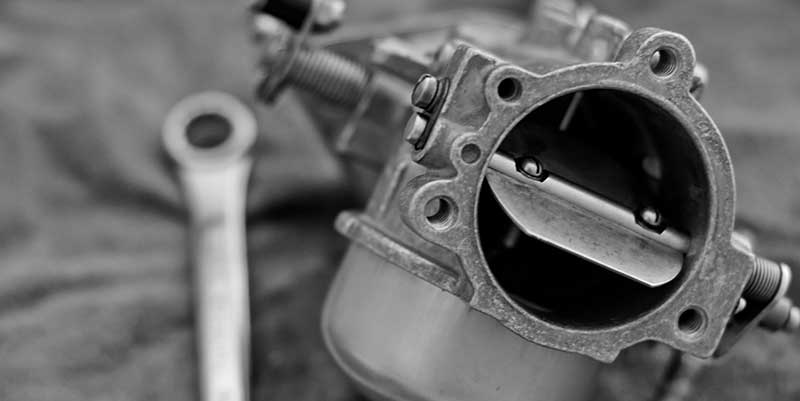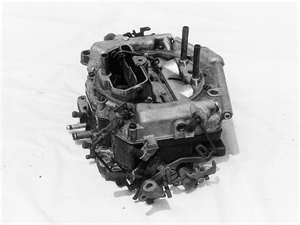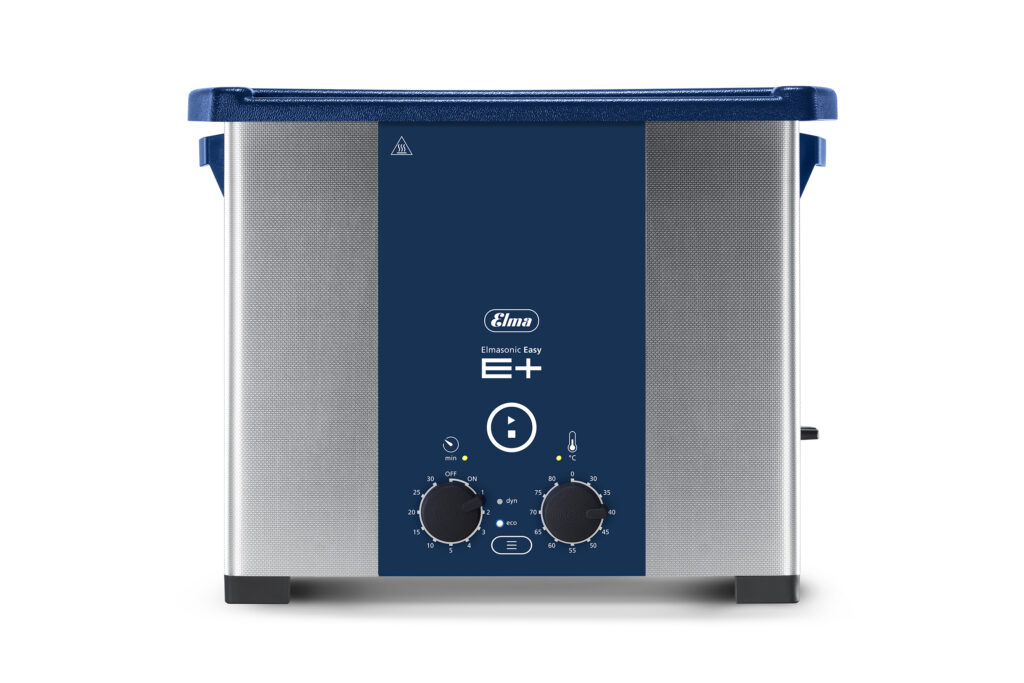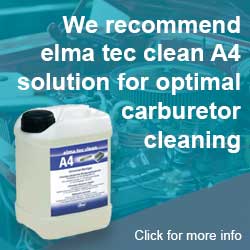
Ultrasonic Carburetor Cleaner Commonly Asked Questions
Ultrasonic carburetor cleaning is a topic on several engine-related discussion forums. Shade-tree DIY and professional mechanics have tried various dips, sprays and other methods to return dirty carbs to peak performance. In this post, Tovatech scientists provide their input to ultrasonic carburetor cleaning questions from forum participants and offer added info on the why and how an ultrasonic cleaner is the best answer to a thorough carburetor cleaning job. We’ll cover questions like Rock1’s post on the AACA Automobilia forum, “Has anyone used an ultrasonic cleaner on a carb? What size would it be? What cleaning solution?”
Ultrasonic Parts Washer, is it worth it?
Zombo2000 asks on Reddit: “I’m considering buying a 6L model to clean carbs, etc. Anyone have one? Do they work or do you still have to take everything apart to the last screw.”
Tovatech believes there’s no doubt that ultrasonic cleaners are worth the investment when cleaning carburetors and other greasy, dirty engine components. As to your last point, the beauty of an ultrasonic carb cleaner is that all you have to do is grant access to the float chamber. Ultrasonic energy (explained later) reaches all surface immersed in the cleaning solution.
The same issue was addressed by Ozziechainsaw on ArboristSite, who also wanted to know:
What Type of (Cleaning) Solution Should be Used?
Our suggestion is a biodegradable ultrasonic cleaning solution, like elma tec clean A4. It’s a mildly alkaline concentrate that you dilute to 1 to 5% with water. This makes it extremely economical over the long run. It is specially formulated to clean engine parts, carburetors, fuel injectors, gears, bearings, and similar engine components.
What Size Ultrasonic Cleaner Should I Buy?
eljay asks on The Garage Journal: “As I am gearing up to start restoring an older gummed up engine, I think I could use an ultrasonic cleaner to clean the parts (like carbs, fuel pumps, brake calipers, springs) once I start disassembling….. I don’t want to spend a fortune, nor have something else take up space. Is 3L too small?”
When it comes to size of cleaner, carburetors or any other item being cleaned must be fully immersed in the ultrasonic cleaning solution. Keep in mind that products being cleaned must be placed in baskets, the dimensions of which are smaller than tank dimensions. And that items being cleaned should not be in contact with each other.
The 3-liter capacity cleaner mentioned is equivalent to an Elmasonic E Plus 30 with tank dimensions 9.5 x 5.4 x 3.9 inches and a recommended basket size 7.7 x 4.1 x 2.0 inches. This size should be OK for motorcycle and small engine carbs. For larger carbs, consider a 6L or larger unit. (Elma is a brand mentioned by other respondents to eljay’s question.)
So our advice is measure the size of the largest parts being cleaned and specify your ultrasonic carb cleaner accordingly. For example, the Elmasonic E Plus line is offered in 9 capacities to 7.5 gallons, the largest having a recommended basket size of 17.7 x 10 x 5.3 in. (L x W x H).
As to cost, responders to many forum chats on ultrasonic cleaners bemoan the unreliable performance and breakdowns of “cheap” ultrasonic cleaners. Our suggestion is that if you are serious about ultrasonic cleaning carbs or other engine components, invest in a unit backed by at least a two year warranty and from a vendor offering technical service and support before and after your purchase like Elmasonic from Tovatech.
What Ultrasonic Cleaner do you Recommend?
Stoneaxe asks on Practical Machinist: “Any tips, recommendations, pro’s and con’s etc for a small ultrasonic cleaner? I want to use it for motorcycle carbs, small machine parts , an occasional piece of the wife’s jewelry, etc. Maybe a 6″x8″x10” capacity? Is it better to have bigger? Is there a down side of bigger?”
Swampdweller responds: “We have an Elmasonic S….and I sometimes wish we had gotten the next size bigger but it works great. Made in Germany I believe. came with a basket and holds 1 gallon of cleaning solution. Don’t remember the cost but I want to say 4 to 5 hundred but we’ve had it for a few years.”
Our Comment: Determining unit size is covered above. The Elmasonic Select (formerly S) series mentioned by Swampdweller is a step up from the Elmasonic E Plus series mentioned earlier and offers added features including programmed cleaning. It is offered in 7 tank capacities from 0.75 to 24 gallons, making it a good choice for auto repair enthusiasts and shops handling a variety of tough cleaning challenges.
As to a down side of a bigger tank, the larger the tank the higher product cost and a larger volume of cleaning solution is needed. However, it also allows more flexibility in the size of items being cleaned.
Additional Questions Ultrasonic Carburetor Cleaning

Here you will learn more on why using an ultrasonic cleaner for carburetors will do the job faster, easier and more thoroughly than sprays, brushes and soaks in potentially dangerous solvents.
We also provide suggestions on ultrasonic carburetor cleaning solutions and a typical carburetor cleaning cycle.
Why Consider an Ultrasonic Carburetor Cleaner?
Two key words: fast and thorough carburetor cleaning.
Ultrasonic cleaners are fast. Cleaning can be accomplished in as little as 20 minutes. On top of that, thorough cleaning is accomplished with minimal disassembly.
How this is achieved is described next. But these two key benefits explain why labor costs are substantially reduced and suggest that an ultrasonic cleaner for carburetors will soon pay for itself by increasing your productivity.
How Ultrasonic Action Delivers Quick Carburetor Cleaning
Benchtop ultrasonic cleaners such as the 3.5-gallon Elma EP120H available from Tovatech assure the thorough cleaning of ultrasonic power in a biodegradable ultrasonic cleaning solution as opposed to the hit-or-miss results when using brushes and solvents.
Equipment consists of an 11.8 x 9.4 x 7.9 inch (LWD) tank to hold the cleaning solution, a generator that drives ultrasonic transducers affixed to the bottom of the tank and intuitive controls. Its companion 9.8 x 7.7 x 5.3 inch basket positions the parts at the correct level in the tank.
The EP120H the transducers vibrate at an ultrasonic frequency of 37,000 cycles per second (37 kHz). This causes the bottom of the cleaning tank to vibrate as a membrane in turn producing millions of minute vacuum bubbles in the ultrasonic cleaning solution for carburetors. These bubbles implode with tremendous force when they contact any wetted surface to quickly and safely blast loose and carry away any and all contaminants.
The process is called cavitation. Because the bubbles are so tiny they reach all carburetor parts immersed in the cleaning solution – including cracks, crevices and blind holes inaccessible with sprays, solvents, brushes and wash tanks.
The EP120H is equipped with a heater, a timer, a dynamic mode combining sweep for cleaning uniformity with pulse to remove stubborn contaminants and degas fresh solutions. The unit’s microprocessor-controlled generator maintains constant ultrasonic power, sensing and adjusting for light or heavy loads in the tank. Digital operation ensures reproducible performance from run to run.
What Is the Right Ultrasonic Cleaning Solution for Carburetors?
We have two recommendations, depending on the nature of contaminants.
1. To remove dirt, grease and light carbon from carburetor components
We suggest biodegradable elma tec clean A4, a mildly alkaline concentrate that you dilute to 1 to 5% with water and available in 2.5, 10 and 25 liter containers.
Partially fill the ultrasonic cleaner tank with water, add A4 in the required amount for a full tank then continue adding water to the fill line.
Turn on the unit and activate the dynamic mode to mix and degas the solution. This removes cavitation inhibiting trapped air and it must be done each time you prepare fresh cleaning solution.
Elma tec clean A4 removes oil and grease from parts. These contaminants float to the surface of the solution where they can be skimmed off for disposal. Elma tec clean A4 also removes soot, combustion residues, and grime. You can use this ultrasonic cleaning solution for carburetors over multiple carburetor cleaning cycles, making it an extremely economical choice.
Water based elma tec clean A4 is biodegradable, but observe local regulations regarding proper disposal of spent solutions.
2. To remove heavy carbon and shellac from carburetor components
We recommend Shellac-Buster CLN-SH RS75 Cleaner in one-gallon or five-gallon containers. This is used full strength but, as with elma tec clean A4 must be degassed prior to starting. Shellac-Buster can be reused over and over for an extended period of time. Make sure to filter out solid contaminants periodically.
What Is a Typical Carburetor Cleaning Cycle?
When you’re ready to do the job, we suggest partial disassembly of carburetors so the cleaning solution reaches into the float chamber.
Cleaning is enhanced when the solution is heated, so set the unit’s thermostat to 70˚C. The EP120H heater control is equipped with a green LED that flashes during heating and remains on when the set temperature is reached.
Place carburetors into the basket (ordered separately), lower them into the cleaning solution and place the lid on the tank to conserve heat, minimize evaporation and noise.
Set the timer for 20 minutes and push the start button to initiate cleaning.
Activate the dynamic mode to combine sweep and pulse, assuring a thorough cleansing cycle.
The EP120H will turn off at the end of the cleaning cycle. With experience you will soon learn optimum cleaning times based on the condition of the carburetors.
When the ultrasonic cleaner for carburetors cycle is completed remove traces of cleaning solution with a fresh water rinse. Parts should be dried before reinstallation.
Need More Info on Ultrasonic Cleaning Carburetors?
You’ll find all you need in Ultrasonic Cleaning FAQs as well as our post on How Ultrasonic Cleaners Work. We also suggest our ultrasonic cleaning learning center video.
Contact the ultrasonic cleaning professionals at Tovatech for help in selecting the right cleaning solutions for carburetors, an ultrasonic cleaner sized right for your shop, and to provide guidance on its use. We’ll also answer questions you may have about warranties and returns.


